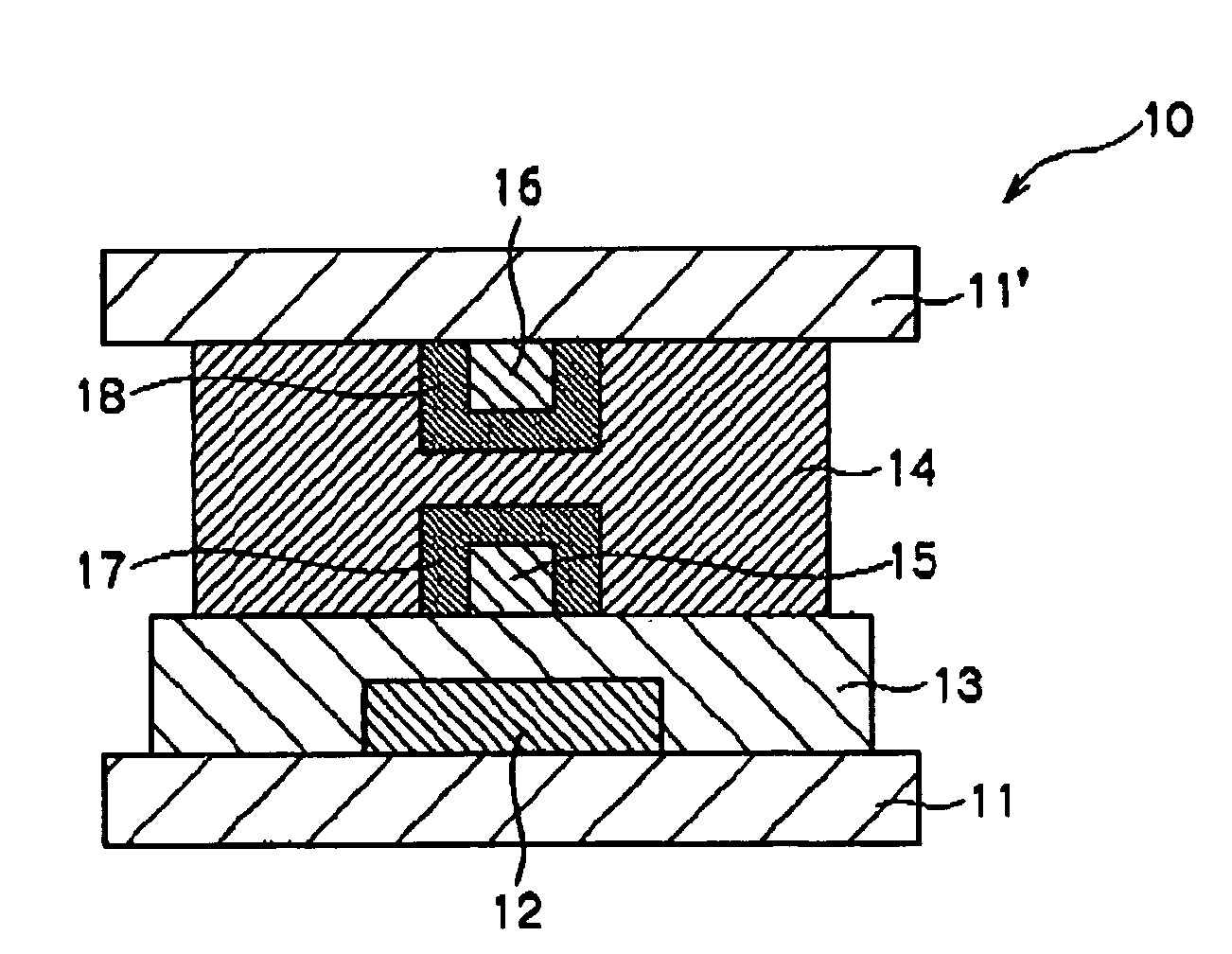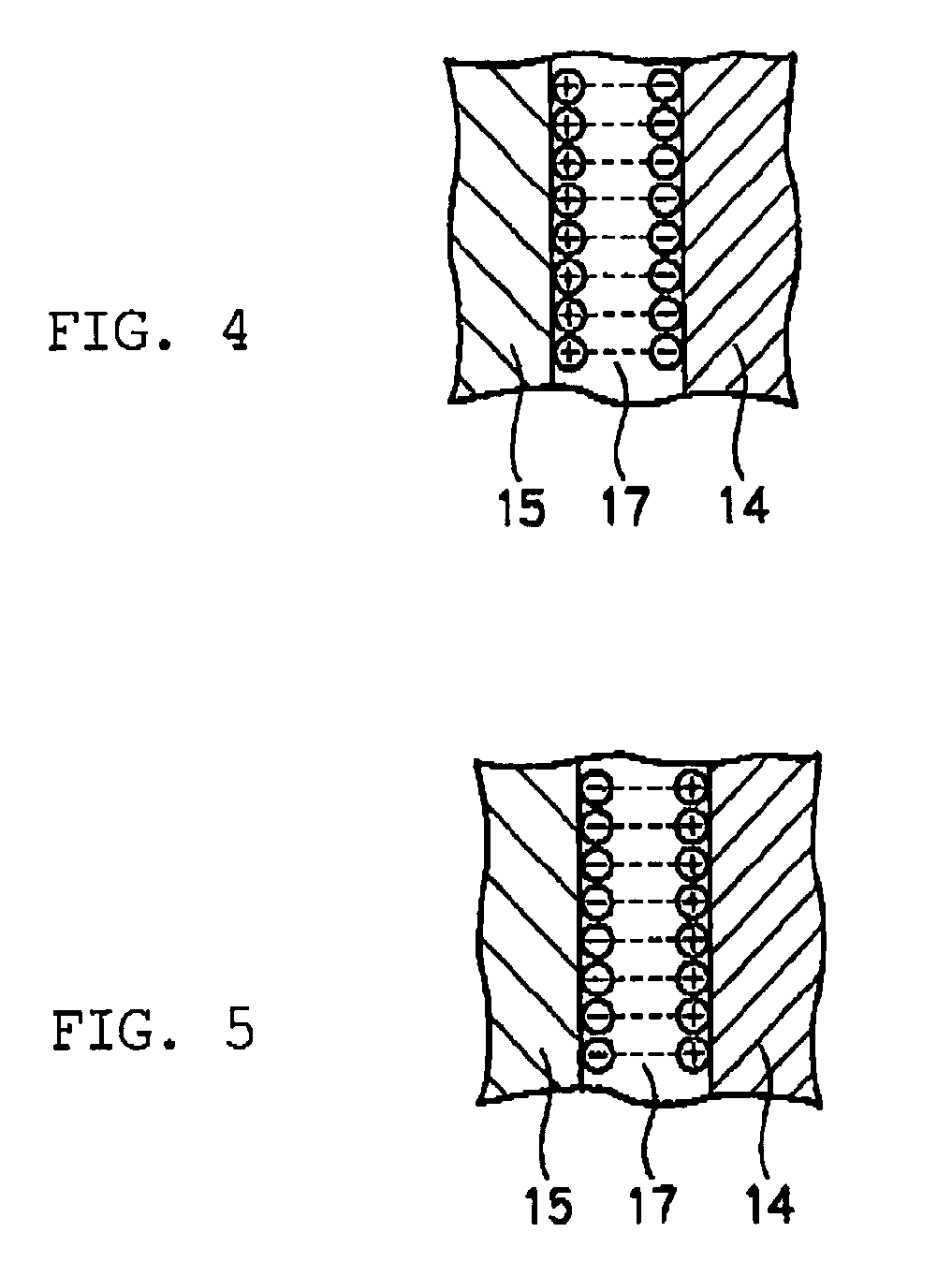Organic semiconductor device
a semiconductor and organic technology, applied in the direction of semiconductor devices, electrical apparatus, transistors, etc., can solve the problem that the charge is not easily injected achieve the effect of easy charge carrier injection high speed, and effective and rapid supply to the organic semiconductor layer
- Summary
- Abstract
- Description
- Claims
- Application Information
AI Technical Summary
Benefits of technology
Problems solved by technology
Method used
Image
Examples
example 1
[0112]As the organic semiconductor device in Example 1, a staggered type organic transistor element was prepared.
[0113]On a non-alkali glass substrate, (manufactured by Corning Incorporated, product number: 1737), an ITO thin film of 10 Ωcm sheet resistance was formed by sputtering method, and a pair of drains source electrode of 50 μm channel length and 1 mm channel width was formed by photolithography method. In order to inhibit non-desirable leak current deriving from conduction path, a passivation film comprising SiO2 sputtering film was provided on the glass substrate, provided with the pair of drain•source electrode, by the photolithography method and lift off method so that only the organic transistor element forming region is bared.
[0114]Prier to the formation of the charge carrier injection promoting layer, the glass substrate provided with the source electrode and the drain electrode was subjected to ultrasonic cleaning with aceton, alkali detergent (manufactured by Furuuc...
example 2
[0120]As the organic semiconductor device in Example 2, an organic transistor element of coplanar type electrode configuration was prepared.
[0121]First, on a high-doped n-type silicone substrate, 300 nm of SiO2 layer was formed by heat oxidation, and a gate electrode substrate provided with a gate-insulating layer was obtained. This gate electrode substrate serves as both a gate electrode and a substrate. Next, on the gate-insulating layer formed surface of the substrate, an ITO thin film of 10 Ωcm sheet resistance was formed by sputtering method, and a pair of drain•source electrode of 50 μm channel length and 1 mm channel width was formed by photolithography method. A passivation film was provided on the glass substrate, provided with the pair of drain•source electrode, by the same way as Example 1.
[0122]After cleaning the gate electrode substrate, provided with the source electrode and the drain electrode, by the same way as Example 1, a charge carrier injection promoting layer o...
example 3
[0124]As the organic semiconductor device in Example 3, an organic transistor element, in which the charge is transported in a direction of a thickness of the organic semiconductor layer, was prepared.
[0125]First, by the same way as Example 2, a gate electrode substrate provided with a gate-insulating layer was obtained. Next, on the gate-insulating layer formed surface of the substrate, an ITO thin film of 10 Ωcm sheet resistance was formed by sputtering method to form a source electrode. A passivation film was provided on the glass substrate provided with the source electrode, by the same way as Example 1.
[0126]After cleaning the gate electrode substrate provided with the source electrode, by the same way as Example 1, a charge carrier injection promoting layer of ClBP, mainly a monolayer, for making the hole injection to the drain•source electrodes formed side surface of the gate electrode substrate easier, was formed by the same way as Example 1. Further, by the same way as Exam...
PUM
 Login to View More
Login to View More Abstract
Description
Claims
Application Information
 Login to View More
Login to View More - R&D
- Intellectual Property
- Life Sciences
- Materials
- Tech Scout
- Unparalleled Data Quality
- Higher Quality Content
- 60% Fewer Hallucinations
Browse by: Latest US Patents, China's latest patents, Technical Efficacy Thesaurus, Application Domain, Technology Topic, Popular Technical Reports.
© 2025 PatSnap. All rights reserved.Legal|Privacy policy|Modern Slavery Act Transparency Statement|Sitemap|About US| Contact US: help@patsnap.com



